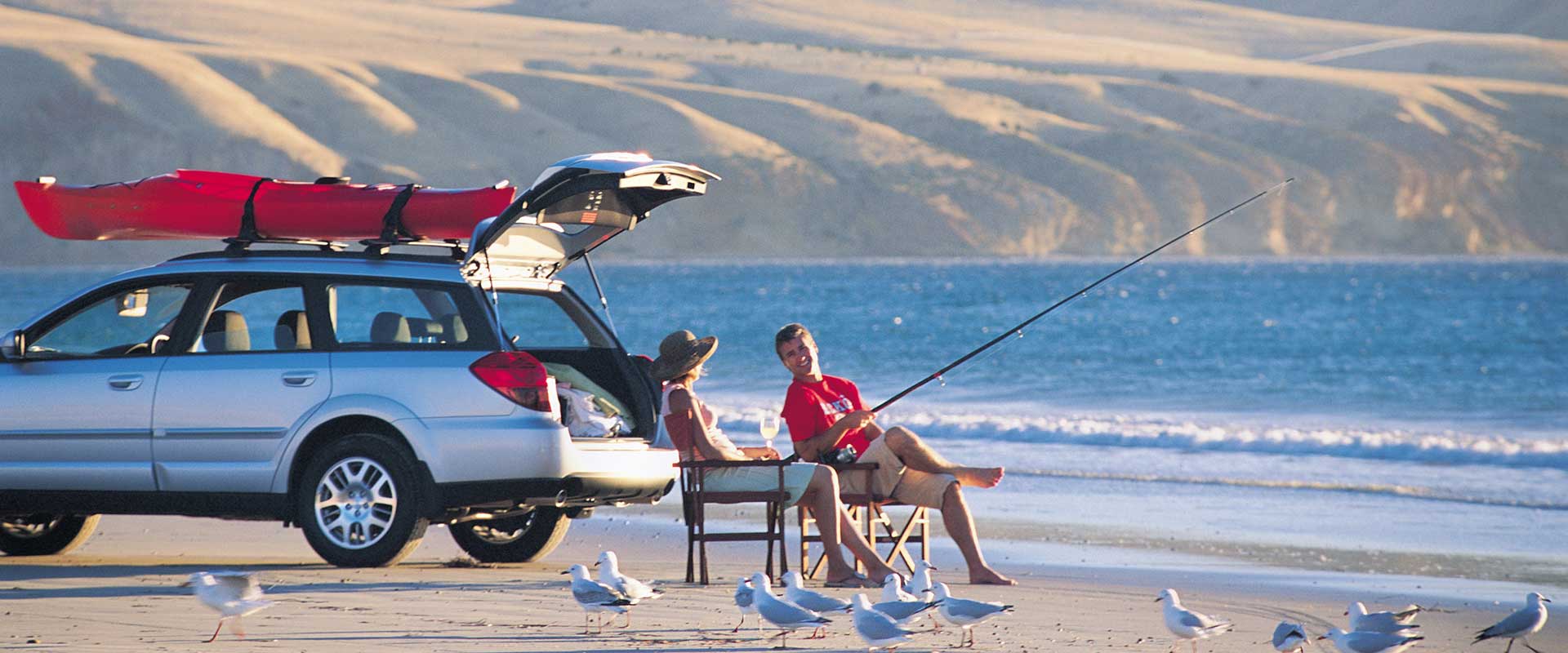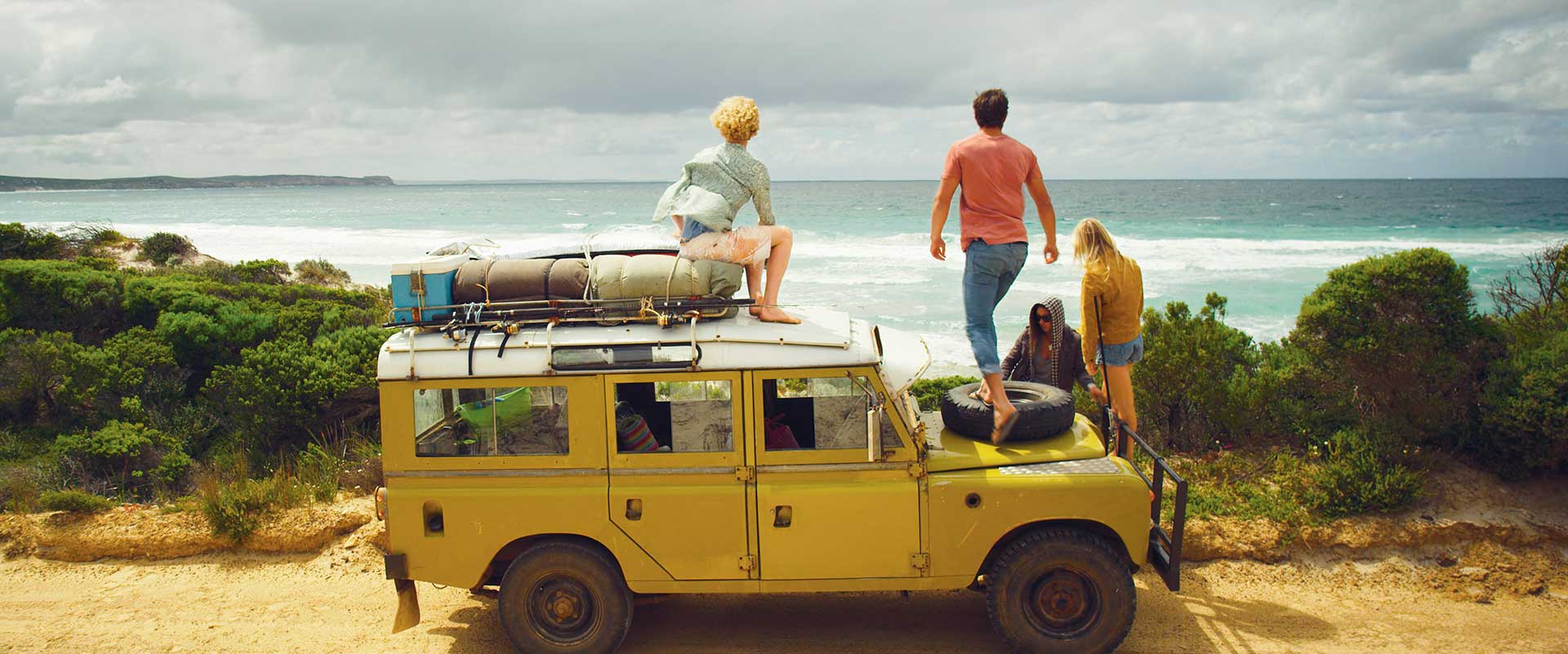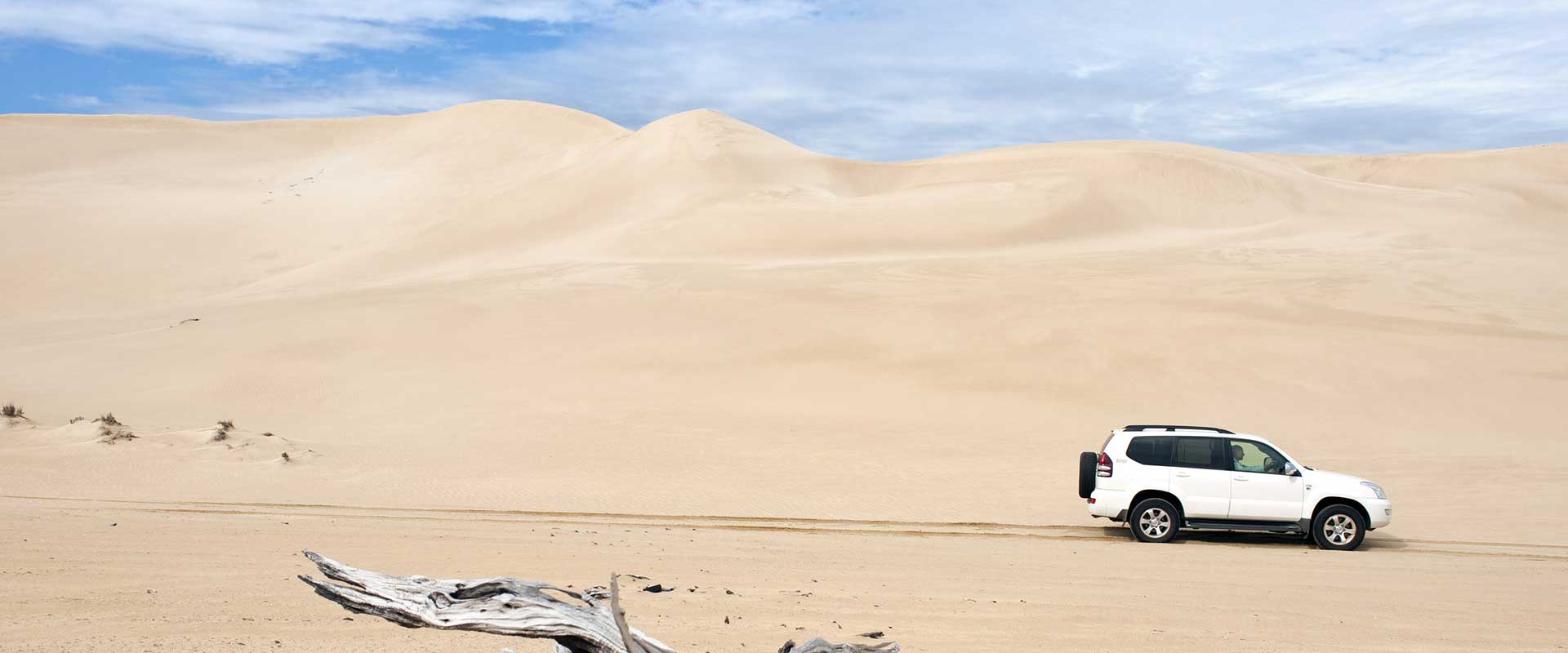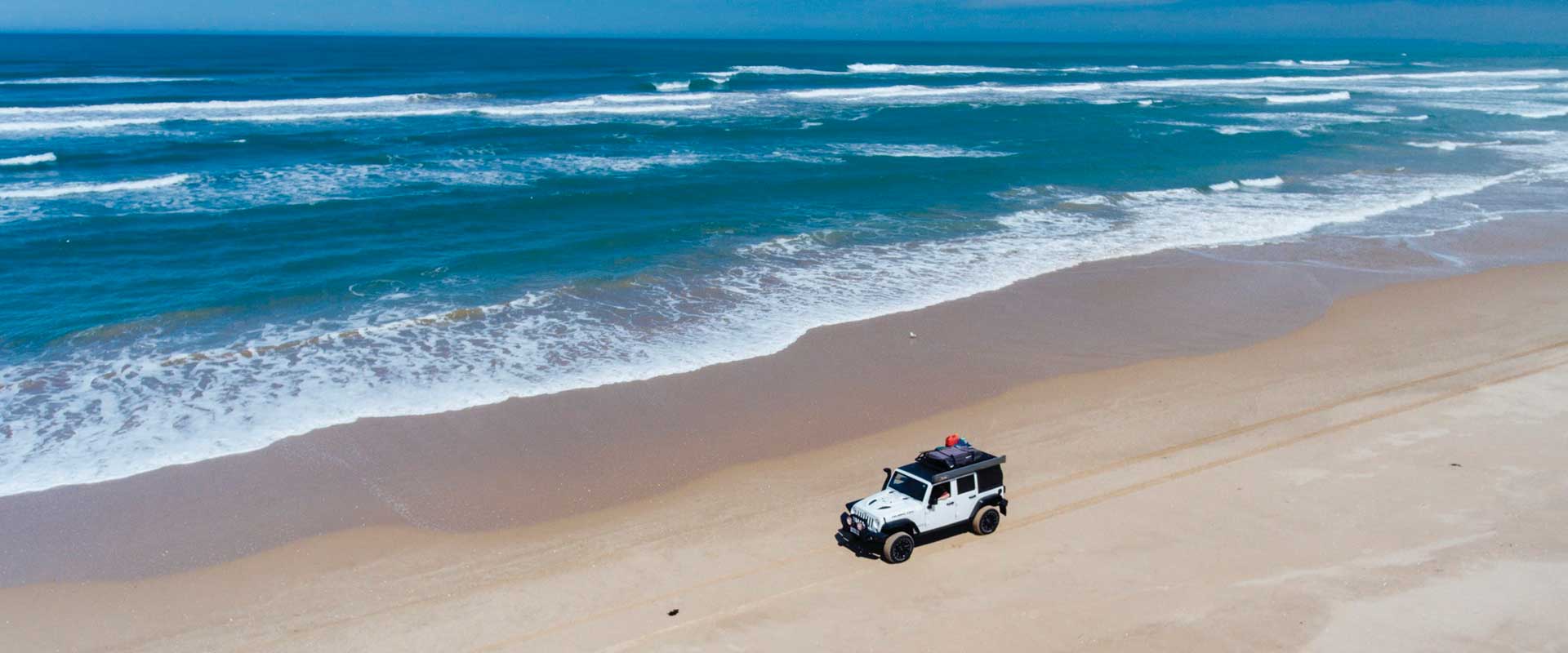There are several beaches that you can legally drive on in South Australia. Here are the top areas to take your four-wheel drive for a cruise.
While some of the beaches in South Australia are accessible to all vehicles, some are only suitable for four-wheel drives and experienced drivers.
Do your homework before you leave and read the signs at your destination. Then pack a picnic, let down your tyres and hit the sand! Here are some options to try.
Fleurieu Peninsula

Located less than an hour’s drive south of Adelaide on the Fleurieu Peninsula, Sellicks Beach and nearby Silver Sands are two favourite summer destinations for Adelaide families. You don’t need a four-wheel drive for these beaches – you can drive most cars on the firm sand between the waterline and high tide mark. Silver Sands beach is open to vehicles from 5.30am to midnight.
During the summer months, access ramps may be staffed by volunteers and a vehicle access fee will apply. Cars with beach passes are allowed on Sellicks Beach, below the Esplanade.
From Goolwa Beach you can drive to mouth of the Murray River. This is a drive for experienced four-wheel drivers, who should stop and read the information signs before journeying onto the sand. Drive approximately 10 kilometres along the Sir Richard Peninsula but make sure you allow time to return before the tide comes in.
Kangaroo Island

A popular coastal town full of holiday accommodation, Emu Bay is also the only place you can drive on the beach on Kangaroo Island. A four-wheel drive is not essential, provided you stick to the firm sand.
This stunning, sweeping beach stretches four kilometres and provides a safe swimming beach as well. Grab some fresh oysters from American River, then drive down the firm sand at low tide and you’ll feel like you’ve been stranded on a desert island - in the nicest possible way. Just come back to reality and depart before the tide starts coming in!
Eyre Peninsula

There are several beaches along the Eyre Peninsula which offer a true four-wheel drive experience.
Lincoln National Park is only half an hour's drive from Port Lincoln. It’s here you’ll find the fabulous Sleaford–Wanna sand dune system which is recommended for experienced four-wheel drivers only. Collect a brochure and get the latest conditions from the Port Lincoln Visitor Information Centre before you go. Entry fees apply and be sure to follow the orange marker posts.
In the Coffin Bay National Park, Point Sir Isaac is a favourite destination with surfers, anglers and birdwatchers. To reach the lighthouse, experienced four-wheel drivers must navigate a slender 55-kilometre coastal strip of sandy beaches and limestone outcrops. Allow at least three hours each way. Entry fees apply to Coffin Bay National Park.
Take the four-wheel drive to Shelly Beach at Ceduna - a four-kilometre stretch of beach you can drive on and try fishing from. The beach at Point Bell Conservation Park provides excellent fishing and swimming. Camping is permitted. Access is over sand dunes and four-wheel driving experience is essential.
Scotts Beach, within the Fowlers Bay Conservation Park provides a long, sandy stretch - again with fishing and camping available.
Limestone Coast

Robe is one of the most popular holiday coastal towns on the Limestone Coast and with a wide sweeping beach like Long Beach, it’s no wonder. The beach is perfect for families and can be accessed by all vehicles – just stick to the firm sand at low tide and drive carefully.
Just south of Robe is the Little Dip Conservation Park. It is home to some great coastal drives, perfect for the summer months. Not for the novice driver, the park offers a mix of freshwater and saltwater environments and is known for its sand dunes and challenging soft-sand drives in parts along the beaches. If you plan on camping, you will need to pre-book online.

Running for almost 100 kilometres along the Southern Ocean to the Murray Mouth is the Coorong National Park. A favourite destination for four-wheel drivers, the area is known for its fishing, kayaking, birdwatching and camping. Much of the region is remote, so come fully-stocked with water, food, fuel, firewood (note strict fire regulations) and emergency supplies.
Yorke Peninsula
The Yorke Peninsula is a popular family holiday destination and boasts 700 kilometres of coastline. At Wallaroo is the wide, sweeping North Beach where holiday houses and shacks line the shoreline. At low tide, the firm sand makes it possible for all types of cars to drive on the beach. This is a popular beach, so drive slowly and look out for kids, dogs and low-flying frisbees!
West of Minlaton is Parsons Beach. Access to the beach is only suitable for four-wheel drive vehicles. You can drive the 20-kilometre stretch to Minlacowie. If you are lucky, you might see dolphins playing in the water. Just remember to stick to the hard sand at low tide, as hooded plovers are known to nest in the sands above the high tide mark.
Another easy beach drive for four-wheel drives only is between Flaherty’s Beach and Point Turton. This area offers a great beach for families, which is popular with the locals.
Before you go…
• Know your vehicle and your limits. Deflate your tyres and have the necessary equipment and knowledge in case of an accident or emergency. It’s a good idea to let someone know where you are going and make sure your insurance will cover you!
• Not all beaches are suitable. Beaches are constantly changing with the tides and weather conditions. Always check with the local national park rangers or visitor information centres and listen to their advice.
• Know the tide times. Aim to drive at low tide and allow sufficient time to return before the tide starts turning. Also check weather forecasts, fire restrictions and be aware of any change in conditions. For weather updates, see the Bureau of Meteorology’s website.
• Give way. Australian road rules apply on beaches. Vehicles must be roadworthy and registered. You must wear a seat belt, drive at appropriate speed and don’t drink and drive. Remember to give way and respect other beach users. During summer, there can be many other vehicles on beaches, so slow down and be alert.
• Don’t trespass. Many beach drives actually traverse private land and the owners kindly allow four-wheel drivers to drive across it. The same applies in many dunes above the high tide mark, where birds such as the hooded plover nest and make their home. Stick to the defined tracks and “tread lightly".

